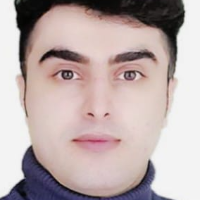Physical Activity Among Iranian Former Sportsmen and Athletes as Possible Evidence for Continuity Theory of Aging
Author(s):
Article Type:
Research/Original Article (دارای رتبه معتبر)
Abstract:
Objectives
Physical activity in late life may be a continuity of activity pattern in the early stages of life. The current study aimed to assess physical activity levels in former Iranian sportsmen and athletes, in 2016.
Methods
This cross-sectional study used convenience sampling method to select 223 former Iranian sportsmen and athletes living in Tehran City, Iran. Informed consents were obtained from all study participants before the study. The short-form Persian version of the International Physical Activity Questionnaire (IPAQ) was used for assessing physical activity. To achieve demographic information, a demographic data Questionnaire was used. For analyzing the obtained data, SPSS was used.
Results
The Mean±SD age of the study participants was 70.81±8.29 years. In total, 5.8%, 42%, and 52.9% of the former athletes had less than 10 minutes of walking, moderate- and vigorous-intensity physical activity, respectively. About 4.9% of the individuals reported walking on a regular basis and none of them reported daily moderate- and vigorous-intensity physical activity. Moreover, 8.5% of the individuals failed to report walking for at least 10 min/d. Totally, 43.5% of the individuals reported no moderate-intensity physical activity and about 56.1% of them did not participate in any vigorous-intensity physical activities. Furthermore, 31.4, 8.5, and 5.8 of the athletes reported walking, moderate- and vigorous-intensity physical activity for more than 150 minutes per week, respectively. According to the three types of activity defined by the IPAQ, 49% of the athletes were inactive, 36.3% were minimally active and about 15% were physically active. Physical activity decreased with increasing age (P<0.01; r=-0.529) and had a direct relationship with educational level (P<0.01; r=0.278).
Discussion
The findings highlight the importance of considering active intervention programs at younger ages to ensure better leisure participation of the elderly, especially in physical activity.Keywords:
Language:
English
Published:
Iranian Rehabilitation Journal, Volume:17 Issue: 40, Apr 2019
Pages:
141 to 148
https://www.magiran.com/p1980814
سامانه نویسندگان
مقالات دیگری از این نویسنده (گان)
-
The Relationship Between the Elderly's Sleep Quality and Social Support
Mohammadtaha Saadati Rad *, Amirreza Izadi, Saeideh Azizi Mahkooyeh, , Zeynab Amiri, Farzaneh Amini, Mozhdeh Eliyasi, Abdolhassan Naghibi, Hadiseh Shaker
Interdisciplinary Journal of Acute Care, Winter and Spring 2024 -
Effects of a Mobile Health Diabetes Self-care Program on HbA1C, FBS and Self-care in Older Adults with Type 2 Diabetes: A Randomized Controlled Trial
Atefe Esmailpour, Ehteram-Sadat Ilali*, , Afsaneh Fendereski, Zahra Kashi, Soodeh Razeghi Jahromi
Journal of Nursing and Midwifery Sciences, Jan-Mar 2025



